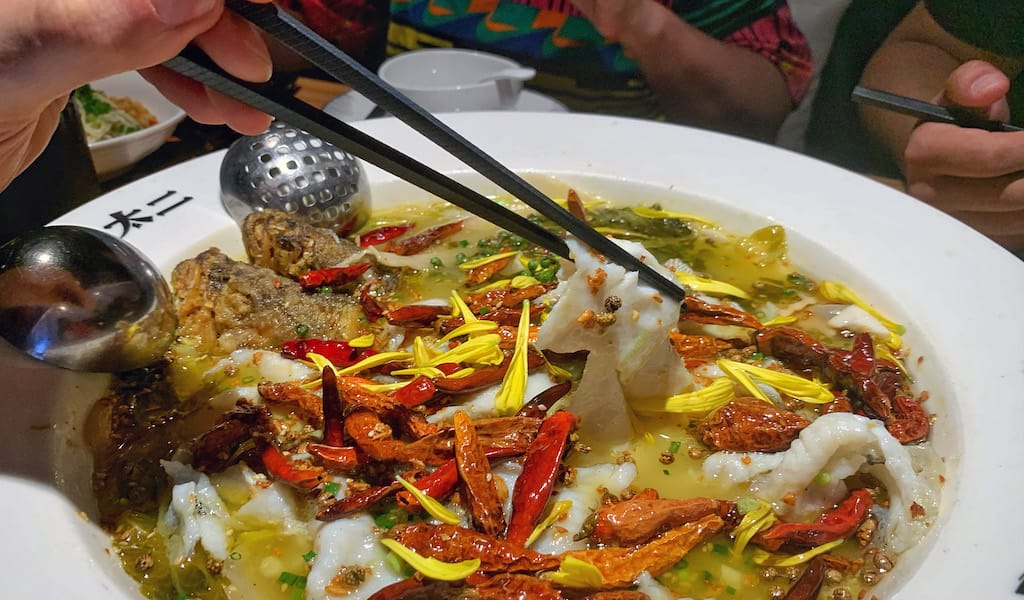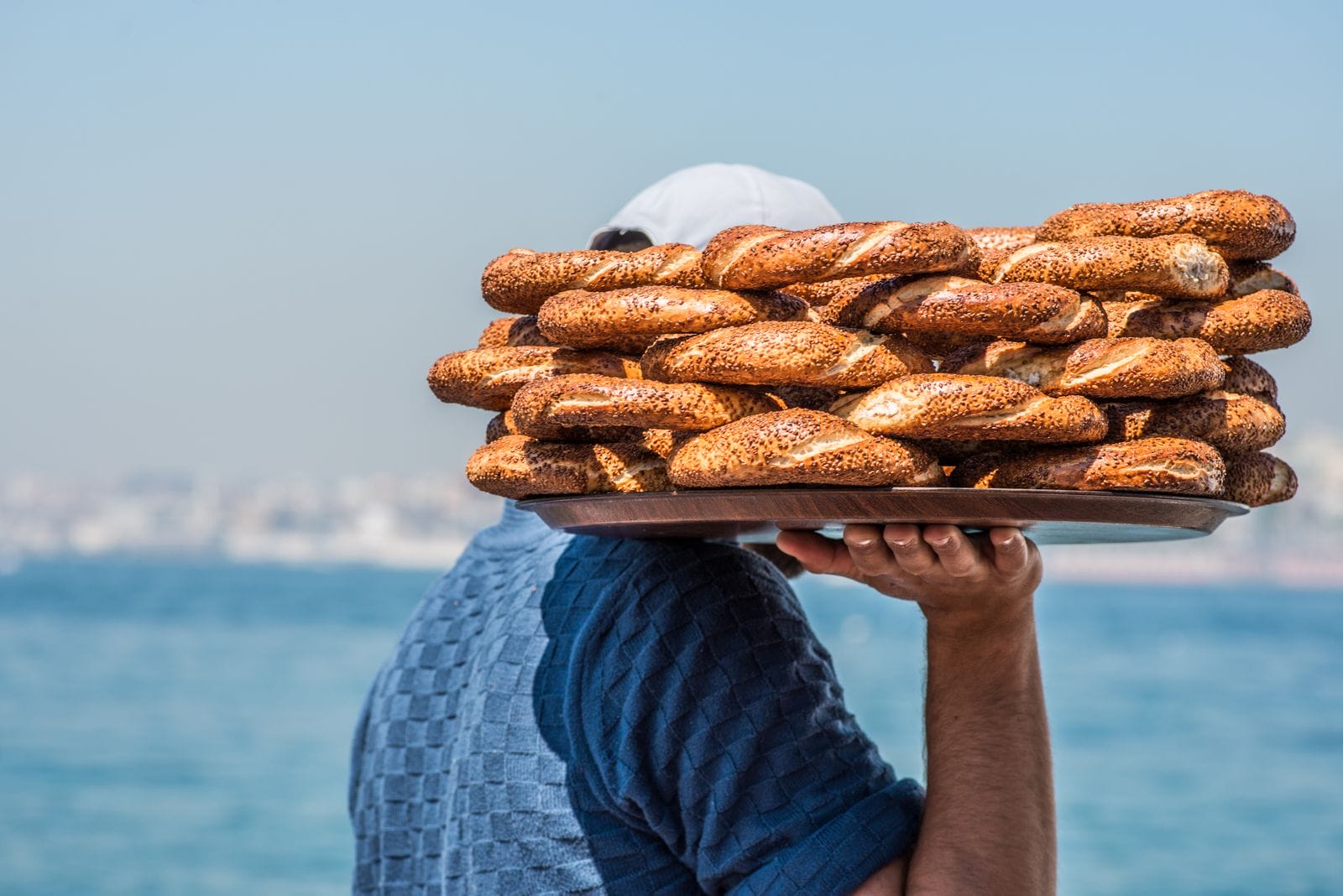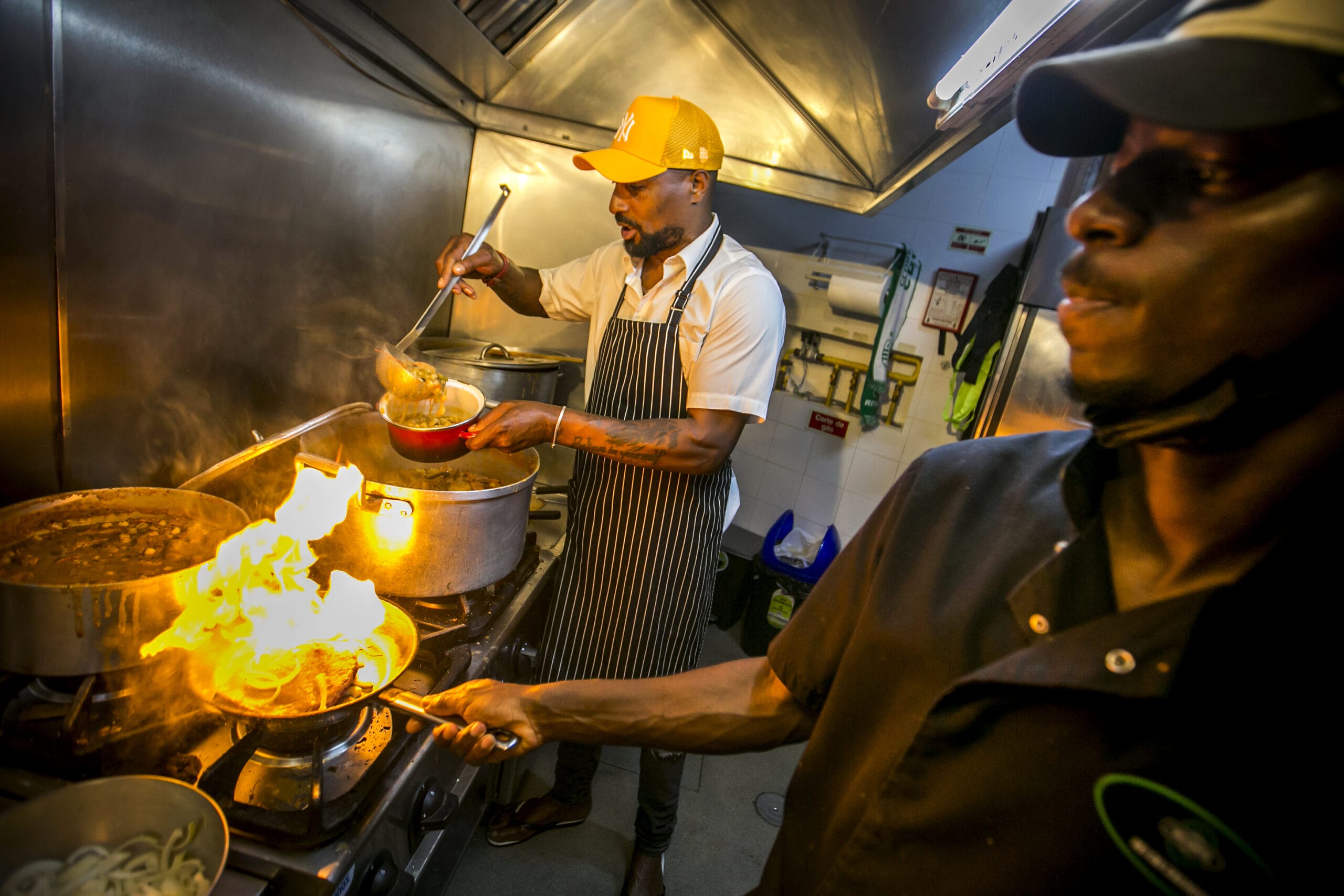At Tai Er Suan Cai Yu (Tai Er Chinese Sauerkraut Fish), there are four rules: 1. You can only have four people max at one table at a time, and no latecomers will be seated. 2. No baby chairs allowed. 3. They will not adjust the spiciness level. 4. No takeout (although this restriction has been lifted during the pandemic).
Take into account these restrictions, and also the fact that queues of diners can mean a wait of close to one hour during peak mealtimes, and you wonder why anyone would go to this restaurant. In reality, Tai Er is one of China’s biggest domestic success stories with over six million fans on WeChat and Weibo (China’s Facebook and Twitter equivalents) and 120 locations throughout China.
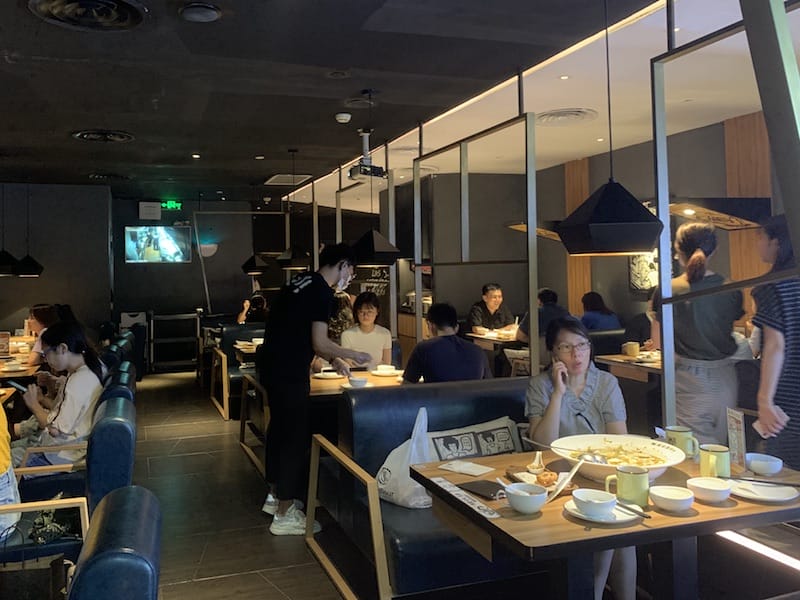
The waitstaff are happy to explain the logic behind their draconian rules. The restriction on the number of guests at a table and the baby ban are both in place so that you are less likely to spend your meal distracted by socializing (or infants) and thus mindlessly eating. The restaurant wants your focus squarely on the food and the quality of ingredients. As for the lack of choice when it comes to spiciness – a real anomaly in China where many restaurants have up to seven or eight degrees of heat from non-spicy to extremely spicy to choose from – the restaurant’s head chef, who develops the recipes that are replicated at each location, has determined the optimal heat for this dish, not your palate, and that’s the level at which it will be served, period. And since the kitchen prepares the food to be eaten immediately, takeout (or god forbid delivery, a multi-billion dollar industry in China) would ruin the intended texture of the fish. (Although this is one rule that has been relaxed during the Covid-19 period.) But once you’ve tried the texture and the spice of the fish, you’ll be much more inclined to trust their methods.
Once you’ve tried the texture and the spice of the fish, you’ll be much more inclined to trust their methods.
Tai Er doesn’t stop there when it comes to bending the rules of the Chinese food and beverage industry. There aren’t many restaurants that serve a giant bowl full of expensive boned perch, only to literally print on the serving platter that the “sauerkraut” is actually more delicious than the fish. These people know what they’re doing, from the kitchen brigade right down to the marketing team that has designed this place to be wanghong, which literally translates to “internet red” but means “viral,” usually amongst millennials who are posting photos of the beautifully plated food on their WeChat accounts. Expect the entire waitstaff to shout, “Eat fish to save the world!” to every single diner who passes through their doors. It’s all part of the gimmick.
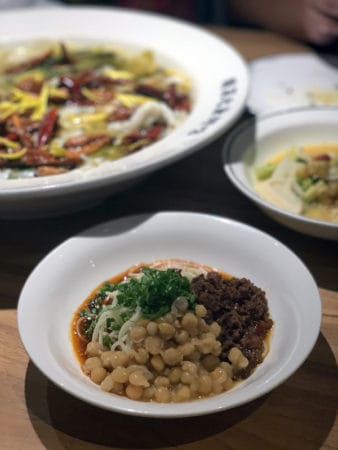 And is the “Chinese sauerkraut fish” or suan cai yu, good enough to merit this eccentricity? Absolutely! The food is excellent, but it’s best to ignore the English language translation they’ve gone with when setting your expectations. “Suan cai” translates to sour vegetables and is often called Chinese sauerkraut, but don’t expect any cabbage at this location. The vegetable in question is fermented mustard tubers, part of the Brassica family, and they’re pressed and aged for up to three years in an earthen jar with Sichuan peppercorn and dried chiles; you can order a miniature version of the jar to be served up tableside at Tai Er.
And is the “Chinese sauerkraut fish” or suan cai yu, good enough to merit this eccentricity? Absolutely! The food is excellent, but it’s best to ignore the English language translation they’ve gone with when setting your expectations. “Suan cai” translates to sour vegetables and is often called Chinese sauerkraut, but don’t expect any cabbage at this location. The vegetable in question is fermented mustard tubers, part of the Brassica family, and they’re pressed and aged for up to three years in an earthen jar with Sichuan peppercorn and dried chiles; you can order a miniature version of the jar to be served up tableside at Tai Er.
Like the famous Sichuan oil-poached fish, suan cai yu is a fish poached in a broth with spices, but the addition of the pickled mustard greens adds a sour, complex element to the broth. It’s not an easy dish to master. To make the fish slices so velvety, the perch is marinated with cornstarch and egg white before adding it to the fish broth (usually made from the bones of the same fish before it was filleted). And the fish slices are lightly poached in the fish broth with stir-fried suan cai – as well as some pickled peppers and ginger – and served immediately, as per the rules! The dish is topped with dried red chiles and golden flower petals, mostly for color, and a sprig of fragrant green Sichuan peppercorns.
Take your picture, post on WeChat and then eat before the texture is ruined!
Published on September 02, 2020
Related stories
February 28, 2024
Food Tours NDQuick Bite: This full-day Istanbul market tour draws from our best-of list in the European side’s Karaköy neighborhood and the Asian Kadıköy, tied together by a Bosphorus crossing, visiting two markets on two continents. Our favorite Istanbul experiences include exploring the eateries in local markets and crossing the Bosphorus on the public ferry. The route for…
June 27, 2022
LisbonQuick Bite: On this full-day tour of central Lisbon, we’ll study the cuisines, history and diversity of Portugal’s former colonies. Get a taste of Cape Verdean cachupa, Brazilian pastries, Goan samosa, layered convent cake bedecked with spices and Angolan piripiri sauce and meet the people in the kitchen keeping the traditions of these communities alive.…
September 27, 2021
QueensOn a corner in Astoria, across the street from a bright blue-domed Orthodox church and in the shadow of the towering viaduct that carries Amtrak trains out of New York and towards New England, Gregory’s 26 Corner Taverna has been quietly recreating Greece for 13 years. At lunchtime in the outdoor patio, you mostly hear…







































